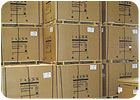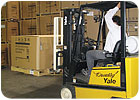
For the first part of the year, many distributors had 10 and 12 SEER product to sell, and sales were strong. As they ran out of the sub-13 SEER product, many began to see sales of replacement systems drop. Some of the dealers I surveyed told me that their service departments have had the best year ever, as many customers are opting to repair rather than replace.
Another reality facing many this year is that we did not have a hot, sweltering summer; in addition, the winter was mild in a lot of places. Couple this with the fact we have a hit or miss economy, a war that feels like it will never end, and business that is changing faster than our pensions can keep up, and it all adds up to the perfect storm.
LOWER PRICES A SURPRISE
One unexpected theme that has surfaced this year is that the price of 15-16 SEER systems has, in many markets, fallen from their level of a year ago. Dealers in markets from the East to the West coasts report that the high-end systems of last year have actually dropped in retail price this year. In some cases the competition did not even offer a 16 SEER system last year, now they find they need to offer the higher efficiencies, as the marketplace is demanding them.One reason may be that the "good, better, best" system of pricing has moved up a notch. The old "good" system was a 10 SEER, while the "better" system was a 13 SEER (better efficiency, better warranty, thermostat, etc.), and finally the "best" system was a 16 SEER (two stage, high-efficiency filter, etc.). Many dealers never really expected to sell the best system in this scenario; they used the process to drive the better sale, which is what they wanted in the first place. For that reason, some priced the best system with a much higher markup than the good or better system, thinking if they actually sold one best system at that price, they would really clean up.
Fast forward to the summer of 2006. The good system is now 13 SEER, the better is 16 SEER, and the best may be 20 SEER or more. Now the target is the 16 SEER, so dealers following this strategy must adjust their margins. The formerly high-priced 16 SEER is now the system that they want to sell most often. The 20 SEER system is the one that has been marked up in order to drive 16 SEER sales, so dealers drop the margin on the 16 SEER system to make it look more attractive. They also do not pass on the commodity price increases and inflation bumps because they have to keep the sales numbers up at all costs.
This is not a strategy. The dictionary defines strategy as a plan, approach, and direction taken. This is a reaction, not a well-thought-out plan.

BEST APPROACH
You may be asking yourself, so what are we to do? We need a retail sales process, one that does not manipulate the buyer, but puts them and their needs first. The answer is to utilize a sales process that incorporates at least four parts:First, sales training. I have seen natural born boys and girls, but salespeople have to be trained. The trained sales professional will help sell entire systems instead of compressor replacements. Those folks who simply replace their compressors as opposed to replacing the entire system will still have the same comfort problems as before. However, they are not going to want to buy a new system after investing $2,000 for a new compressor - their old, energy-guzzling 8 SEER dog hasn't been removed, it's just received a new coat of paint. The contractor hasn't helped the environment, the customer, or received a referral. No one wins.
Second, the questioning process. I am referring to a questioning system that will allow you to help your customers make the third largest purchase they will ever make. This involves formulating questions that will help them understand how they can be more comfortable than ever before. The questioning process is essential if you're going to show them what is needed in a system, and it's more than just energy efficiency. This process will set you apart from the competition.
While you're undertaking the questioning process, be sure to take notes. I share this message with dealers across the nation, and occasionally some will say, "I am not comfortable taking notes, and it just feels fake to me." To that I would respond: When I go to the doctor for my annual physical, he asks me lots of questions. He also refers to my file, where he has made notes from years ago. I like the fact he has specific items in the file, and I take comfort in the fact that he has taken the time to put some notes on paper. So take notes, it will pay dividends.
Third, a presentation manual. I don't mean some coffee-stained copies of letters from 1999, I mean an up-to-date brag book that validates three things: Your company, your products, and you.
Customers must understand why your company is the one that will help them with their comfort needs; that the products you offer will do what you say they will; and that you have the expertise and the connections to design a system that is perfect for them. Put together a manual that includes the history of the company, licenses and insurance, your personal credentials and background, awards given to the employees and company, testimonials from happy campers, before and after photos - all the items needed to provide the consumer with comfort for a large investment.
Fourth, and finally, a financing system. You may need more than one financing program; in fact, you may need three or four. My son sells cars, and he works with 30 different banks in order to offer seven different ways to finance a new set of wheels. The person who went bankrupt last year is still entitled to be warm and cool all year round, so help them find the money.
The bottom line? Use the questioning system to let customers decide which products are perfect for them. Do a thorough analysis to see what products and services are needed. Use your presentation manual to show them that you have the correct products and are the right company to solve their problems. Then offer them the perfect system, along with financing and an extended warranty. Realize that this is the way of life from now on, not just an adjustment for this year.
Publication date: 10/23/2006

Report Abusive Comment